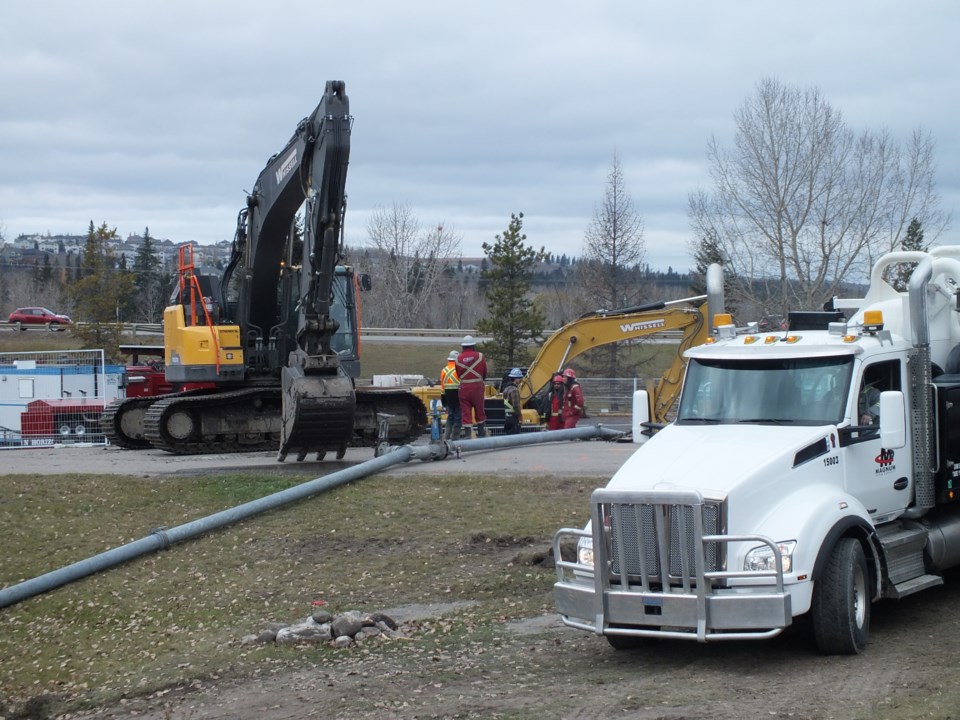A couple of things were missing from this year’s budget debate at Cochrane Town Council.
One was any of the rancour that at times reared its head during last year’s debate, and the other was any significant increase in property taxes.
In fact, after three days of page-by-page examination of the draft 2025 – 2027 budget document prepared by Administration, Council has arrived at what’s called an ‘inflationary budget’ – a 2.63 per cent tax hike for 2025 that will give Cochrane the honour of having the lowest property tax increase among towns in the province.
The first draft presented by Administration came in at 2.5 per cent, but after some minor tweaking they landed on the 2.63 figure. Council made no significant additions or subtractions.
It could be called an election year budget.
A majority of council also took the time to congratulate the Town’s Finance team on the quality of the budget, and at having just received independent third party recognition for their budget work in the form of receiving the Distinguished Budget Presentation Award. This recognition is “a testament to Cochrane’s commitment to excellence in public budgeting and fiscal management” according to the Government Finance Officers Association of the United States and Canada (GFOA). The award acknowledges Cochrane’s budget “for meeting the highest standards as a policy document, a financial plan, an operations guide and a communications device. This achievement stems from the dedicated efforts of the Budget Task Force, which aimed to create a comprehensive and transparent budget serving as a cornerstone of Cochrane's fiscal policy and operational strategy.”
One of the slides presented in council chambers during the presentations showed how like-sized communities were faring in holding the line on property tax increases this year. The next closest to Cochrane was Lacombe (3.2 per cent), Leduc (3.4), St. Albert (4), Okotoks (4.5), Spruce Grove (4.9), Canmore (7.2) and Airdrie (7.5).
Rocky View County is proposing a 1.87 per cent tax increase this year, which is lower than Cochrane.
Key capital investments include the James Walker Trail update (approximately $18M), the Glenpatrick infrastructure project ($15M), and the Horse Creek Sports Park ($11.4M to complete detailed design and servicing of the school site and sports park – servicing to be completed in 2025).
The Glenpatrick project will replace aging water, sanitary and storm sewer lines, put in new roads, and include a permanent traffic button at the three-way stop near Glenbow Elementary School. It will also include traffic calming measures such as pedestrian bump-outs and curb extensions, and will likely take two years to complete.
Council and Administration singled out the project as a priority.
“This is a sensitive project that’s going to need an extra lens of community engagement and stakeholder relations,” said Coun. Tara McFadden.
Executive Director of Development and Infrastructure Services Drew Hyndman echoed McFadden.
“Obviously this is at people’s doorsteps so we need to do a very good job of this project,” Hyndman said.
The Glenpatrick infrastructure renewal project also served as a stark reminder of what’s just around the corner for the fastest growing town in Alberta. Some of the pipes in the project area are 50 years old, and other neighbourhoods are going to need similar major capital investments soon. Tens of millions of dollars will be needed for ongoing projects.
In recognition of that challenge, Council has committed to looking into an asset management program that will gather data on future infrastructure needs, and how to bolster reserve funds.
If all goes according to plan, once the Horse Creek site is serviced, Rocky View Schools would be allowed to add it to their wish list with the province, the site would be seeded in 2026, and could possibly be ready for sports teams in 2027.
Fans of popular Jim Uffelmann Memorial Park will be encouraged to see erosion control remediation work ongoing next summer at the multi-use area.
Public input directly influenced the budget’s priorities, driving decisions on staffing and funding new projects. The total revenue requirement is 6.14 per cent higher than 2024. However, 3.64 per cent of that comes from growth, meaning this is an inflationary budget.
To maintain service levels, the Town is adding staff at a rate it calls consistent with population growth. The latest census puts the population at 37,011.
The operating budget includes programs and services such as snow removal, grading roads, bylaw enforcement and funding to community services such as Family and Community Support Services (FCSS) and the SLS Centre.
Revenues are earned from property taxes, sales of goods and services, fines and penalties and other sources. Capital budget expenses in the capital budget include purchases or construction of fixed assets, such as equipment, vehicles, water and sewer facilities, bridges and road projects. Revenues for capital projects come from grants, transfers from reserves, Off-site Levies and proceeds from sales of equipment help to offset capital costs. General tax revenues are not used for capital projects.
Council endorsed the budget on Nov.19 and gave Administration direction to formalize it as it now stands. They will receive the formal document at their Committee-of-the-Whole meeting Dec. 2 and will approve it officially at the last regular council meeting of 2024 on Dec. 9.
For more detailed information and to view the draft budget as it currently exists go to cochrane.ca/budget.




